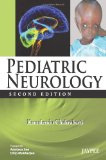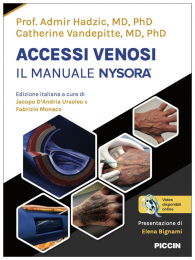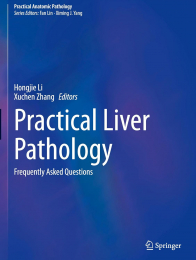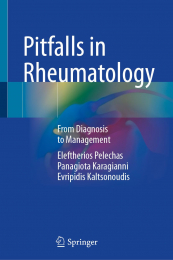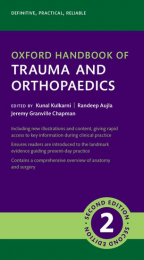Non ci sono recensioni
Paediatric neurology is a subspecialty dealing with neurological disorders in children.
This new edition has been thoroughly updated to present undergraduate and postgraduate students with the latest developments in the field of paediatric neurology.
Beginning with an introduction to the development, anatomy and functions of different parts of the nervous system, the following chapters describe numerous neurological disorders that may be encountered in children.
This practical guide describes proven diagnostic and management techniques, with special emphasis placed on neurological examination and history taking of children under the age of two years, and newborns.
Key points
- Thoroughly updated new edition presenting latest developments in paediatric neurology
- Emphasis on neurological examination and history taking of children under two years, and newborns
- Includes more than 70 easy to understand figures and illustrations
- Previous edition published in 2005
Author information
Kamalendu Chakrabarti MBBS DCH MD
Child Specialist, Kolkata, West Bengal, India
Chapter 1: Development of the Nervous System 1
Neural Tube Formation 1
Chapter 2: Anatomy of Nervous System 10
Anatomy of the Nervous System 12
Major Divisions of the Central Nervous System 14
Description of Some Important Parts of Nervous System 15
The Lobes 15
Medial Surface of Cerebral Hemisphere 19
Nerve Fascicles of the Cerebrum 20
Diencephalon 21
Rhombencephalon 23
Pons 25
Medulla Oblongata 28
Spinal Cord 28
The Peripheral Nervous System 31
The Central-Peripheral Transition Region 32
Innervation of Skeletal Muscle 32
Chapter 3: Essential Functions of Different Parts of Cerebral
Cortex and Effects of their Damage 33
Essential Parts and their Main Functions 33
Structures and Functions of Neurons 33
Effects of Damage of Different Parts of Cerebral Cortex 35
Description of Certain Abnormal Conditions due to Lesions
of Different Lobes 37
The Limbic System and Higher Mental Functions 40
Chapter 4: The Cranial Nerves 44
Olfactory Nerves (Cr. Nerve No. 1) 44
Optic Nerve (Cr. Nerve No. 2) 45
Oculomotor (Cr. Nerve No. 3) 45
Trochlear Nerve (Cr. Nerve No. 4) 48
Trigeminal Nerve (Cr. Nerve No. 5) 50
Divisions of Trigeminal Nerve 52
Abducens (Cr. Nerve No. 6) 56
Facial Nerve (Cr. Nerve No. 7) 57
Vestibulocochlear Nerve (Cr. Nerve No. 8) 62
Glossopharyngeal Nerve (Cr. Nerve No. 9) 63
Contents
xvi Pediatric Neurology
Vagus Nerve (Cr. Nerve No. 10) 66
Accessory Nerve (Cr. Nerve No. 11) 71
Hypoglossal Nerve (Cr. Nerve No. 12) 73
Chapter 5: The Neonatal Nervous System 75
The Neonatal Musculoskeletal System 81
Chapter 6: Some Special Functions of Brain 84
Memory and Learning 84
Speech 86
Development of Speech 87
Vision 93
Gait 103
Autonomic Nervous System 106
Autonomic Supply of Some Important Structures 109
Chapter 7: Recording the Neurologic History and Examination 112
History 112
The Scheme of History Taking 112
Outline of Neurological Examination 116
How to Proceed for Neurological Examination 121
The Mental Status Examination 123
Level of Consciousness 123
Intellectual Performance 127
Memory and Learning 127
Thought Processes 128
Psychomotor Function or Praxis 128
Psychosensory Function 129
Cranial Nerve Testing 130
The Sensory System 152
The Extrapyramidal System 155
The Pyramidal System 158
Cerebellum 160
The Peripheral Nervous System 163
Neurovascular Examination 177
Evaluation of Speech and Language 178
Chapter 8: Neurological Examination of
Children below 2 Years of Age 183
Chapter 9: Neurologic History and Examination of
the Newborn 191
Chapter 10: Diagnostic Investigations of the Nervous System 199
Special Diagnostic Procedures 199
Imaging 204
Tests for Neurophysiology (Functional Tests) 206
Contents xvii
Chapter 11: Congenital Abnormalities of the
Central Nervous System 213
Spina Bifida Occulta 213
Meningocele 213
Myelomeningocele 213
Microcephaly 214
Hydrancephaly 215
Hydrocephalus 217
Craniosynostosis 222
Chapter 12: Diseases of Nervous System of the Newborns 224
Some General Clinical Manifestations 224
Intracranial Hemorrhage 225
Hypoxic-Ischemic Encephalopathy 229
Neonatal Seizures 237
Injuries and Diseases of Spine and Spinal Cord of the Newborn 245
Injuries of the Peripheral Nerves 246
Chapter 13: Seizures in Childhood 248
Chapter 14: Infections of the Central Nervous System 258
Meningitis in the Newborn 258
Acute Bacterial Meningitis beyond Neonatal Period 261
Viral Meningoencephalitis 287
Tubercular Meningitis 296
Chapter 15: Coma in the Pediatric Patients 302
Use of Different Terms 302
State of a Person 302
Glasgow Coma Scale 303
Diagnostic Approach and Immediate Management
of a Comatose Child 304
Pathophysiology of Loss of Consciousness 306
Mechanism of Unconsciousness 307
Clinical Findings in a Case of Coma 307
Chapter 16: Brain Tumors in Children 312
Age Group 312
Types of Tumors 312
Pathogenesis 313
Clinical Manifestations 313
Special Features of Intratentorial Tumors 314
Ependymomas 315
Supratentorial Tumors 315
Pseudotumor Cerebri 316
xviii Pediatric Neurology
Chapter 17: Motor System: Anatomy and Physiology and
Effects of its Damage 318
Upper Motor Neuron 318
Lower Motor Neuron 320
Basal Ganglia 321
Cerebellums 321
Extrapyramidal Systems 321
Integration of Components of Motor System 322
Reflex Movements 322
Damage to the Motor System 324
Approach to Diagnosis of Motor Deficit 324
Examination of the Motor System 328
Clinical Localization of the Lesions in a Patient with Motor Deficit 333
Investigations in a Case of Motor Deficit 337
Chapter 18: Cerebellar Disturbances and Ataxia 341
Ataxia 341
Approach to Patients with Ataxia 344
Chapter 19: Abnormal Movements 352
Disturbances of Basal Ganglia 352
Huntington’s Disease 356
Chapter 20: Disorders of Somatic Sensation 367
Functional Anatomy of the Somatic Sensory Pathways 367
Sensory Changes and their Significance at Different Sites 368
Clinical Findings of a Case of Peripheral Sensory Neuropathy 370
Approach to Diagnosis 370
Chapter 21: Diseases of the Spinal Cord 373
Spinal Cord Trauma 373
Spinal Cord Tumors 377
Tethered Cord 379
Diastematomyelia 380
Syringomyelia 381
Transverse Myelitis 382
Anterior Horn Cell Diseases 384
Chapter 22: Nerve Root Lesions and Disorders of
Peripheral Nerves 387
Nerve Root Lesion 387
Disorders of Peripheral Nerves 388
Classification of Peripheral Neuropathy 388
Evaluation of the Patient 400
Contents xix
Chapter 23: Disorders of Neuromuscular Transmitters
and Myopathic Disorders 403
Myasthenia Gravis 403
Myasthenia Variants 411
Botulism 412
Myopathic Disorders 413
Muscular Dystrophies 416
Limb-Girdle Muscular Dystrophy 422
Glycogenoses 422
Endocrine and Metabolic Myopathies 424
Inflammatory Myopathy 425
Chapter 24: Cerebral Palsy 426
Chapter 25: Cerebrovascular Diseases 442
Arterial Thrombosis 442
Chapter 26: Neurocutaneous Syndromes 446
Neurofibromatosis 446
Tuberous Sclerosis 450
Sturge-Weber Disease 453
von Hippel-Lindau Disease 455
Linear Nevus Syndrome 456
Chapter 27: Neurodegenerative Disorders 457
Sphingolipidoses 458
Gangliosidoses 460
Krabbe Disease (Globoid Cell Leukodystrophy) 464
Metachromatic Leukodystrophy (MLD) 466
Neuronal Ceroid Lipofuscinoses 468
Adrenoleukodystrophy 470
Sialidosis 471
Friedreich Ataxia 472
Ataxia Telangiectasia 473
Olivopontocerebellar Atrophies (OPCA) 474
Abetalipoproteinemia 474
Huntington’s Disease 475
Dystonia Musculorum Deformans 475
Wilson’s Disease 475
Hallervorden-Spatz Disease 475
Multiple Sclerosis 475
Pelizaeus-Merzbacher Disease 476
Alexander Disease 477
Canavan’s Disease 477
Menkes Disease 479
Rett Syndrome 480
xx Pediatric Neurology
Subacute Sclerosing Panencephalitis 481
Schindler Disease 482
Batten Disease (Lipofuscinosis) 482
Fucosidosis 484
Amyotrophic Lateral Sclerosis 485
Index 487

